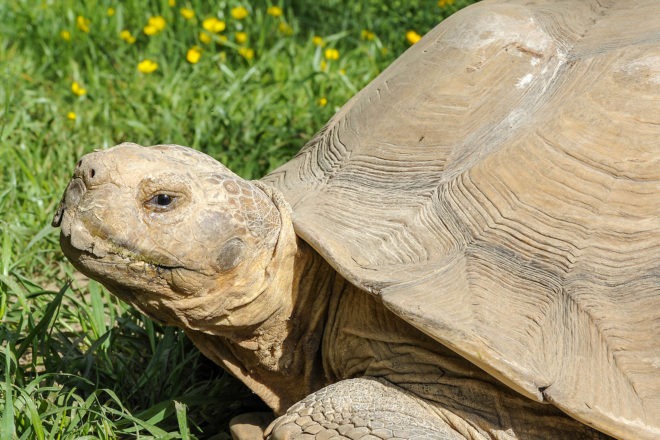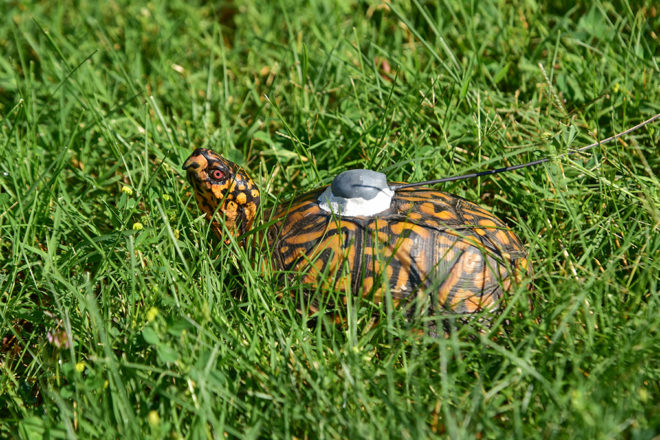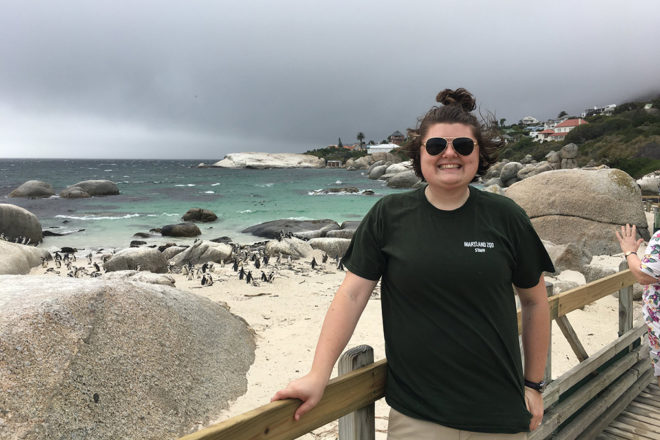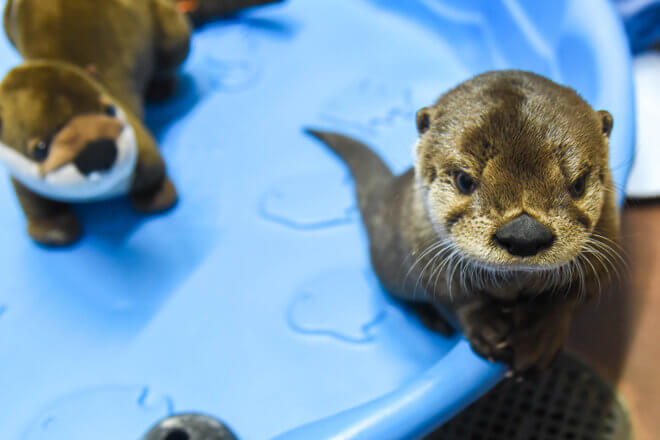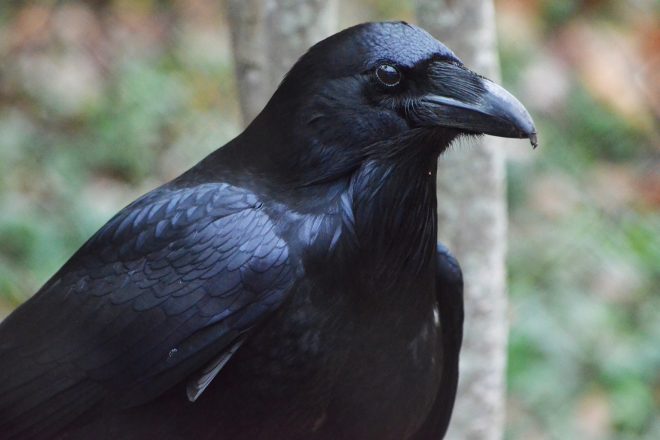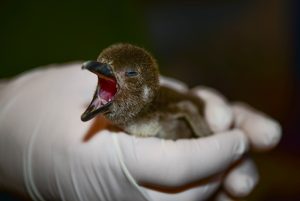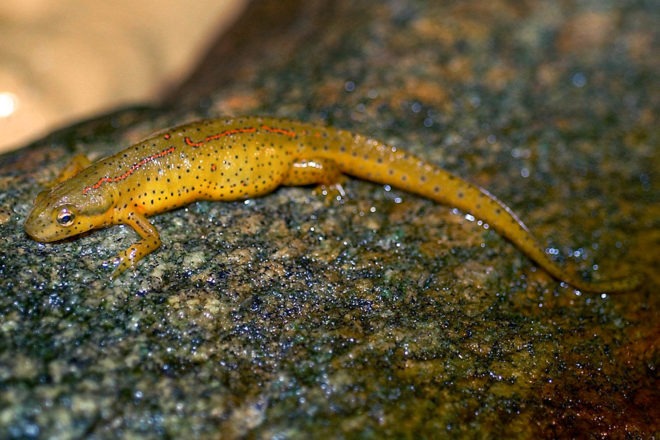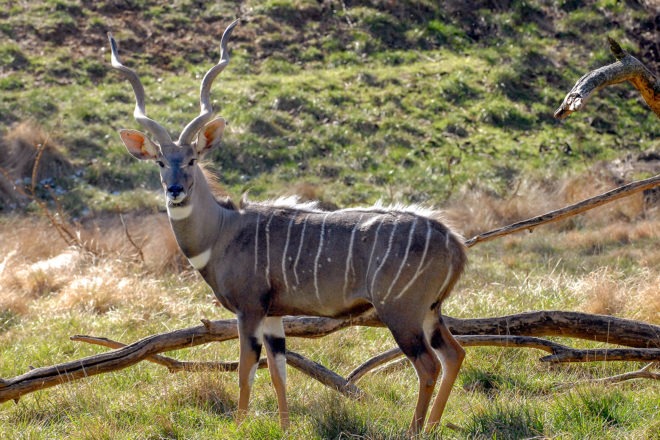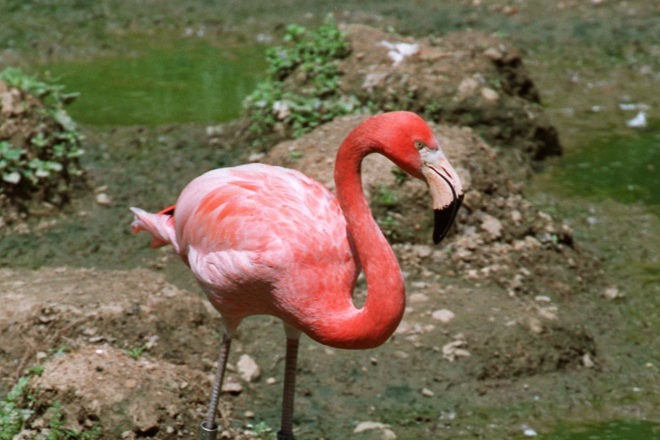Sulcata Tortoise
The Sulcata tortoise is native to the Sahara Desert and the Sahel, a transitional eco-region of semi-arid grasslands, scrub, and savannah in northern Africa. See them at the Maryland Zoo in the African Journey. Sulcata tortoises are big, slow, and tough survivalists. Adults average 18 inches in shell length and 70 to 100 pounds in weight, but ...
The Maryland Zoo Releases Famous LEGO® Turtle to Native Habitat
BALTIMORE, MD – Two years after arriving at The Maryland Zoo in need of extensive veterinary surgery and a customized LEGO® wheelchair, a wild Eastern box turtle has returned to its native habitat in Baltimore’s Druid Hill Park. The turtle was fitted with a transmitter and released this morning. Zoo officials hope to track his movements as a part ...
Zoo Vet Techs Travel to SANCCOB
Hi, we’re Jen and Kaitlin and we are registered veterinary technicians at the Maryland Zoo. In January, we both traveled to South Africa to lend our skills to the Zoo’s long-time African penguin conservation partner, SANCCOB. Follow along as we share about our trip. The Zoo sends staff to South Africa every year to help with penguin ...
Maryland Zoo Caring for Rescued Otter Pup
BALTIMORE, MD – The Maryland Zoo in Baltimore is rehabilitating a female North American river otter (Lontra canadensis) pup. The animal, estimated to be about 40 days old at the time of rescue, was found stranded on the shores of the northeast branch of the Chesapeake Bay in Elk Neck State Park. Park officials waited and watched for signs of its mother ...
Raven
Ravens live throughout the world. They are one of the most widespread species on earth, living throughout North America and Eurasia, as far north as the Arctic and as far south as Central America and northern Africa. They occupy many types of habitat, including tundra, forest, desert, tropics, and mountains. The Maryland Zoo’s Animal Embassy houses ...
The Countdown to 1,000 Chicks is On!
The Maryland Zoo in Baltimore is excited to announce the hatching of two African penguin chicks — the first to hatch during the 2017-2018 breeding season at Penguin Coast. The chicks, which hatched on October 13 and 14, are being reared behind-the-scenes in the Penguin Conservation Center. One chick is being reared by its parents while the other is being ...
Saddle-billed Stork
Saddle-billed storks live throughout tropical Africa south of the Sahara, mainly in open or semi-arid country near sources of water. They forage and nest along rivers, lake shores, flood plains, and swamps. They can be seen as you walk along the African Journey Boardwalk at the Maryland Zoo. Like most storks, saddle-billed storks are mainly solitary ...
Eastern or Red-spotted Newt
Eastern or red-spotted newts live in forested parts of eastern North America, in or near swamps, streams, ponds, and small pools of fresh water. At the Maryland Zoo in Baltimore, visitors can see eastern newts in the Cave exhibit of the Maryland Wilderness. Eastern newts are most active during the warmer months of the year, and are often found ...
Lesser Kudu
Lesser kudu live in dry, densely thicketed scrub and woodlands of northern east Africa. To see them at the Maryland Zoo, walk along the African Journey Boardwalk. Females tend to live in small groups of two or three, plus their offspring. Adult males, called bulls, are generally solitary. They leave their mothers after 1.5 to 2 years to be on their ...
Student questions from Base Camp Discovery
Natalie asks: Most plants make their own food! Using the energy from sunlight captured by special cells in their leaves and sometimes their stems, plants can combine carbon dioxide and water to make sugar! They use the energy stored in this sugar to breath and grow. Plants also take up vitamins and minerals (nutrients) primarily from the ground through ...
Student Questions at BaseCamp
Flamingos often stand on one leg when resting or sleeping. The question that comes to mind is, why stand on just one foot when (at least for people) it is easier to stand on two legs? There are several theories for why flamingos exhibit this behavior. Some of them are rather absurd. For example, at least one source suggests that flamingos stand on one leg ...
Student Questions at BaseCamp
The Maryland Zoo does not currently exhibit tigers, red pandas, or armadillos. The Zoo’s exhibits focus on three major geographic regions — Africa, Maryland, and the Arctic. Lions, elephants, giraffes and chimpanzees are some examples of the African animals featured in the African Journey section of the Zoo. Polar bears, northern ravens, Arctic foxes ...

